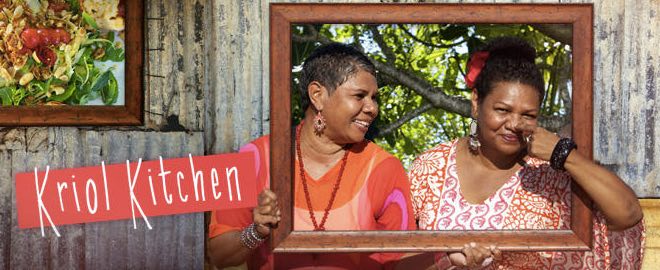Language
Kriol & Yumplatok: Mixed languages
Languages mix just like people do. Kriol and Yumplatok are two languages from such a union.

Wishing you knew more about Aboriginal culture? Search no more.
Get key foundational knowledge about Aboriginal culture in a fun and engaging way.
This is no ordinary resource: It includes a fictional story, quizzes, crosswords and even a treasure hunt.
Stop feeling bad about not knowing. Make it fun to know better.
What is Kriol? What is Yumplatok?
Many older Aboriginal people do not speak English as their first or second language. They speak traditional languages as well as Kriol or Yumplatok.
Kriol and Yumplatok are mixed languages that arose from the fusion of English and Aboriginal languages. Usually bilingual speakers are the first to create a mixed language.
Kriol
Kriol is a spelling variation of 'creole' which denotes a stable natural language developed from the mixing of parent languages.
Despite the language's similarities to English in vocabulary, Kriol is a language in its own right with its own sound system, distinct syntactic structure, grammatical rules, lexicon and norms on how to do things like ask for stuff, talk about personal issues and discuss grievances.
The Kriol spoken across the north of Australia varies from east to west, and there are several dialects, even within the Kimberley region.
Many young Aboriginal people in the Kimberley grow up speaking Kriol, only learning English when they attend school.
Kriol is also part of the mixed languages Light Warlpiri and Gurindji Kriol [1].

Yumplatok
Yumplatok is a creole spoken in the Torres Strait and used by Torres Strait Islanders. 'Yumpla' means 'our' and 'tok' means 'talk'. It is primarily a mix of English and the dying languages Meriam Mer and Kalau Lagau Ya. Yumplatok first developed as a contact language in the 1890s.
Contrary to many other Aboriginal languages, the use of Yumplatok is on the rise and "one of Australia's most widely spoken Indigenous languages". [2] In 2002, up to 30,000 people spoke or understood it. It is recognised as a distinct language by the Australian Bureau of Statistics. Aboriginal radio station 4MW is broadcasting in Yumplatok since 1985. [2]
Common to creole languages is often the lack of a written form.
Aboriginal hip-hop singer Patrick Mau and his band One Blood perform many of their songs in Yumplatok.
The Yumplatok New Testament, published in 2014, is the result of a painstaking translation process that took 27 years to complete. [3]
Video: Luke 02:1–20 spoken in Yumplatok
Story: Setting off some lightbulbs
Greg Dickson spent much of his time as a linguist working in the community of Ngukurr, about 320 kms east of Katherine, Northern Territory, where everyone speaks Kriol. He tells how he set off some non-Aboriginal teachers' lightbulbs [4].
"A few years ago, because access to ESL [English as a Second Language] support within the [NT Education] department was difficult to obtain, some motivated non-Indigenous teachers from the local school in Ngukurr asked for help from me, an outsider.
"Together with a couple of Ngukurr locals, we ran a very basic course on Kriol for about a dozen non-Aboriginal teachers. A two-day course doesn't get you too far, but can set off some lightbulbs.
"Some teachers didn't understand why their students just couldn't get the hang of making plurals e.g. one dog, two dogs. When we pointed out that Kriol doesn't mark plurals on nouns (but can do so with articles or adjectives), several teachers had an ‘ah-ha!’ moment.
"When we told them that Kriol only has a few prepositions and that the Kriol preposition la covers in, on, at and to (among others), it suddenly clicked as to why kids took so long to acquire English prepositions.
"When we explained that Kriol, like many Aboriginal languages, doesn't have a separate pronoun for he and she, but just uses im, suddenly teachers understood why some of their students confused the two.
"And then when we explained that the English pronoun we has four possible translations in Kriol, depending on whether you’re referring to two people or more than two and on whether you are including the person you are talking to or not, we managed to confuse the teachers and replicate what their students experience when they have to grapple with learning a new and complicated language."